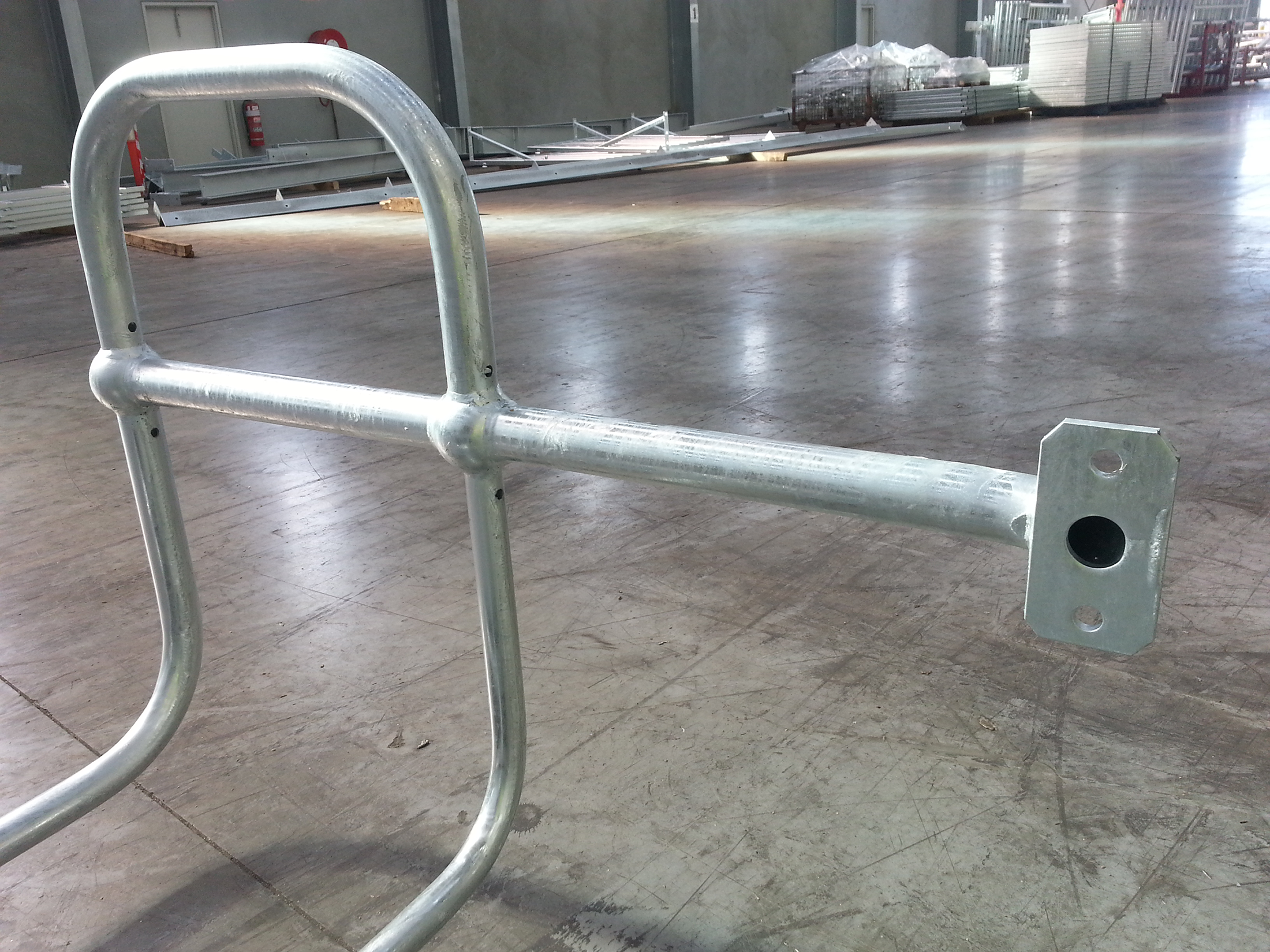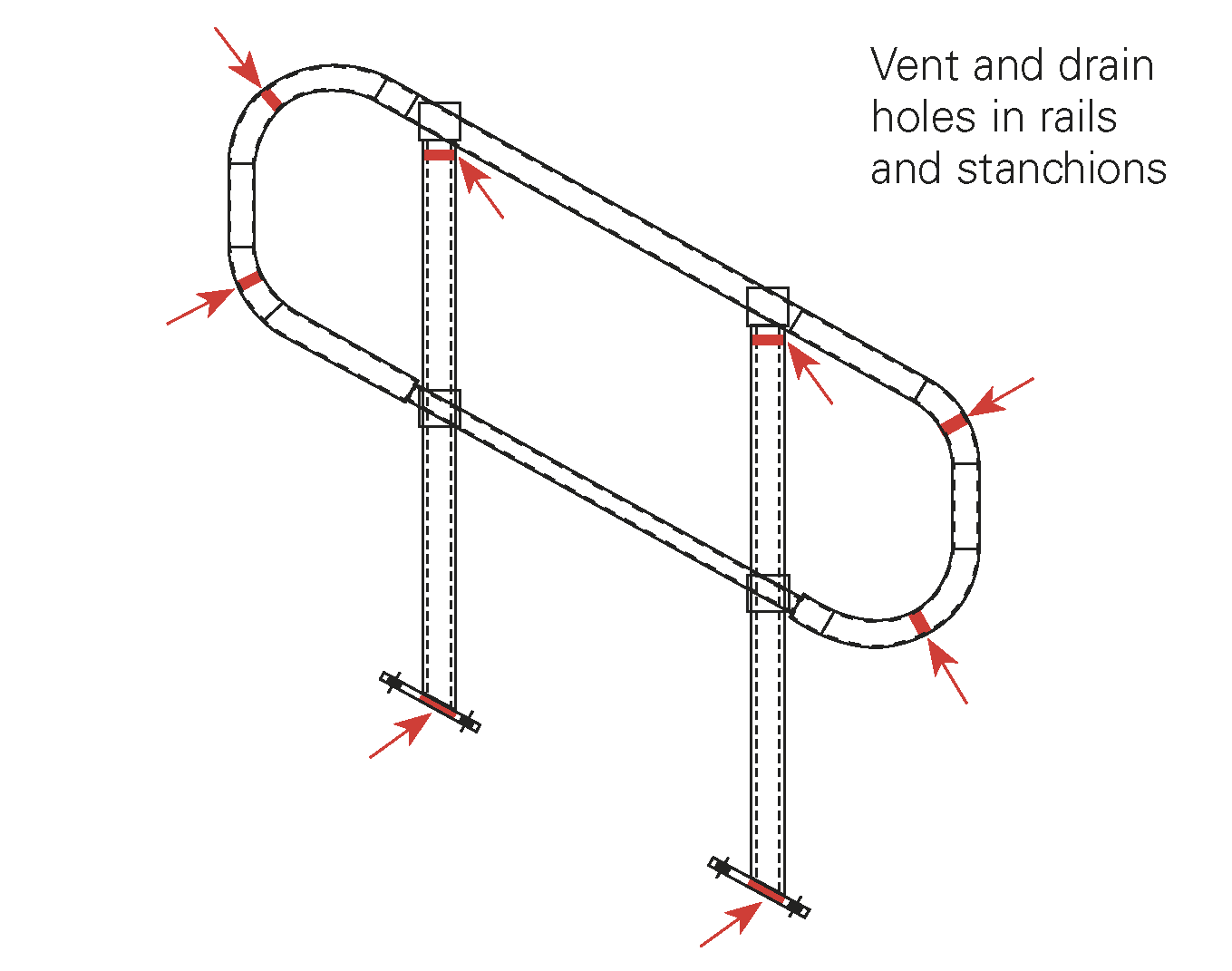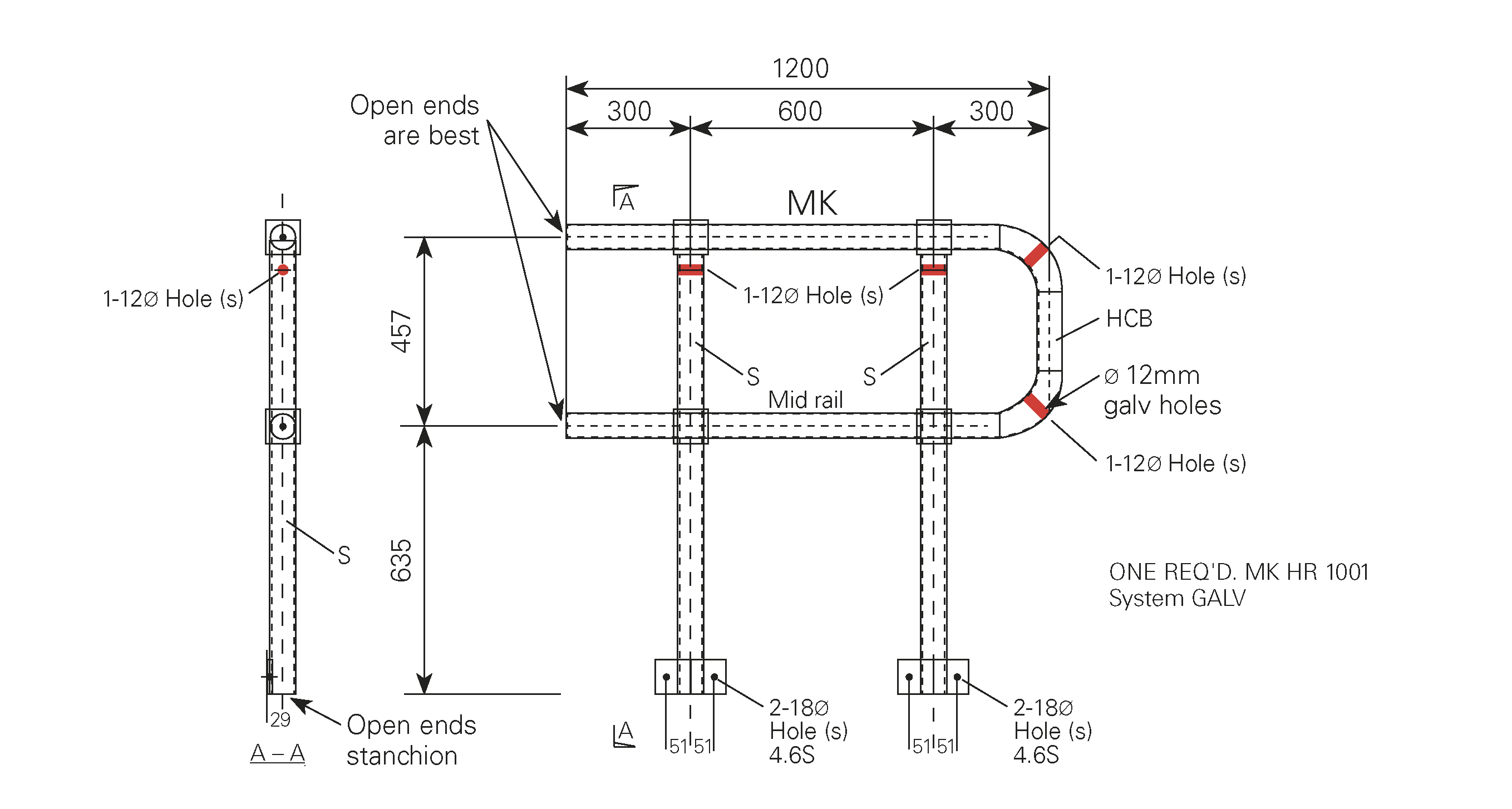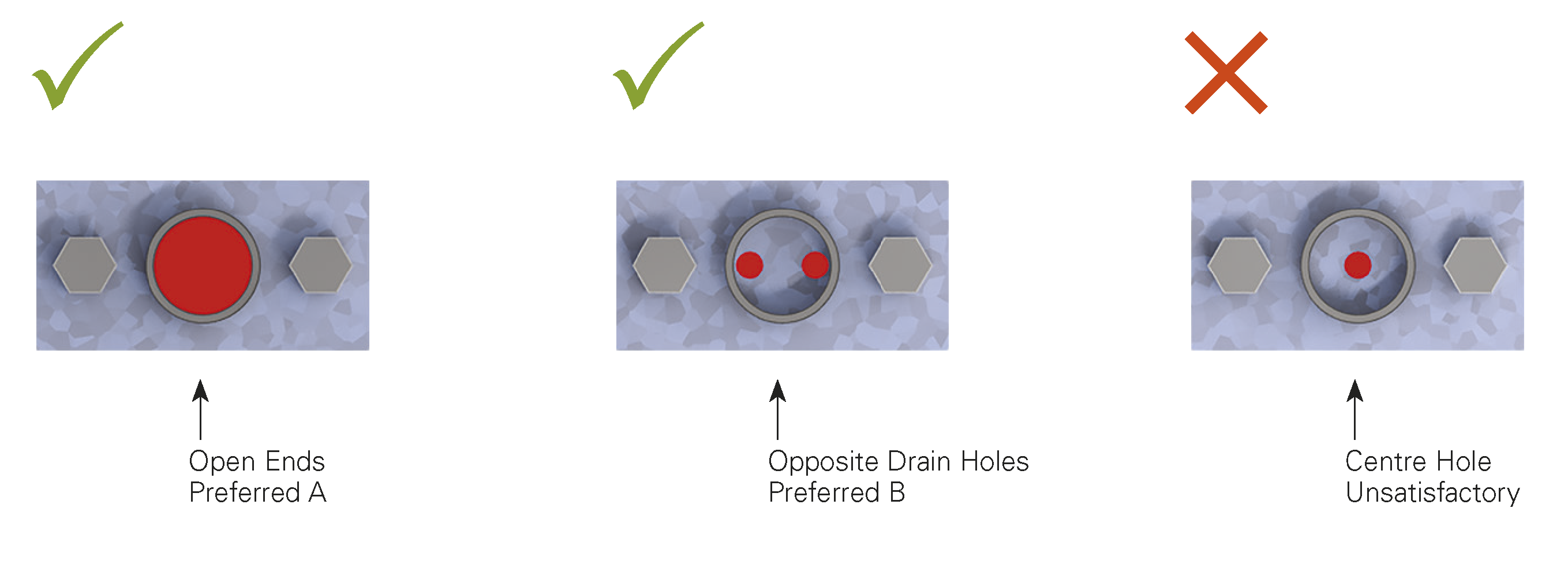Handrails and Balustrades
There is a large variety of handrail and balustrade designs. Handrail may be galvanized in panels or individual parts prior to assembling.
Handrails constructed with hollow sections will require specific attention to detail for the highest quality galvanizing outcomes. Figures 26 show the typical detailing and hole positioning required for standard designs.
Designs which will provide the highest quality HDG finish are:
- Modules within a single plane (straight sections).
- Modular designs that can be bolted together on-site.
- Large vent and drain holes in the hollow sections which will allow the zinc to flow freely and air to escape from inside the article.
- Internal venting of all rail portions inside a stanchion is required if the rail runs continuously through the stanchion
Figures 25 and 26 offer best practice guidance on hole placement for modular straight sections of handrails, which will also provide the galvanizer with more options for hanging the article.
For designs where a higher quality finish of the handrail are essential, for example where touch marks and runs or spikes on visual surfaces are minimised, hanging, venting and draining requirements should be agreed with the galvanizer prior to fabrication.


Designs which will need special consideration to provide the highest quality HDG finish are:
- Handrails with multiple planes (corner or bent sections) so that some parts of the handrail vent and drain slower than others parts within the same handrail. This can affect available hanging angles due to both vent and drain designs and bath size restrictions which could reduce
coating quality. - Vent and drain holes that are internal will need to be verified through the use of external inspection holes.




Figure 25 – Handrail Hole Positions

Figure 26 – Handrail Detail

Figure 27 – Stanchion Base Plates



